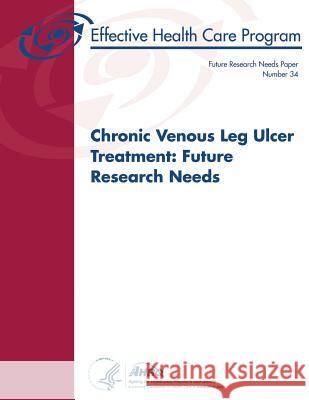Chronic Venous Leg Ulcer Treatment: Future Research Needs: Future Research Needs Paper Number 34 » książka
Chronic Venous Leg Ulcer Treatment: Future Research Needs: Future Research Needs Paper Number 34
ISBN-13: 9781496069221 / Angielski / Miękka / 2014 / 84 str.
Chronic Venous Leg Ulcer Treatment: Future Research Needs: Future Research Needs Paper Number 34
ISBN-13: 9781496069221 / Angielski / Miękka / 2014 / 84 str.
(netto: 78,58 VAT: 5%)
Najniższa cena z 30 dni: 77,15 zł
ok. 13-18 dni roboczych
Dostawa przed świętami

Darmowa dostawa!
Chronic venous leg ulcers affect between 500,000 and 2 million persons annually, and over 50 percent of leg ulcers in the United States are classified as venous ulcers. They are caused by elevated venous pressure, turbulent venous flow, and inadequate venous return that can be due to occlusion or reflux in the venous system. The Johns Hopkins University Evidence-based Practice Center performed a systematic review to determine the effectiveness and safety of advanced wound dressings, systemic antibiotics, and surgical interventions relative to either compression systems or each other among patients with chronic venous leg ulcers. We defined chronic venous leg ulcers as active, noninfected ulcers present for 6 weeks or more with evidence of pre-existing venous disease. An analytic framework was used in the systematic review to describe research gaps. Standard therapy includes aggressive compression with debridement, which heals 50 to 60 percent of venous leg ulcers. Widely used add-on interventions include wound dressings with active components ("advanced wound dressings"), local or systemic antimicrobials, and venous surgery. The comparative effectiveness and safety of these advanced wound dressings, antimicrobials and surgical procedures is unclear.











